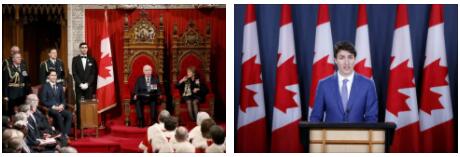Canada has repeatedly taken initiatives in the field of arms control and disarmament. Thus, in 1996, she decisively led the campaign to ban anti-personnel mines, which led in December 1997 to the signing of an international agreement by representatives of more than 100 countries at a conference convened at the invitation of Canada in Ottawa. Check diseaseslearning for political system of Canada.
The main focus of Canadian foreign policy is its relationship with the United States. Free trade agreements concluded between them in 1988 and 1993 (with the participation of Mexico) serve as an effective accelerator for the process of North American economic integration. At the same time, there are sometimes very sharp differences between Canada and the United States on a number of problems in both bilateral (especially economic) and international relations. First of all, this concerns American restrictions on the import of various Canadian goods, the regime for the exploitation of biological and mineral resources of maritime border areas, Canadian measures to protect national culture from the expansion of American mass culture, etc.
In 1970, Canada recognized the People’s Republic of China and established diplomatic relations with it despite the negative reaction of the United States. Canada condemned the intention of the US Senate in 1995 to unilaterally lift the UN arms embargo on the former Yugoslavia. In 1996, together with the EU countries and the Russian Federation, it opposed US attempts to impose on them its measures directed against Iran and Libya under the pretext of combating international terrorism. Canada stubbornly rejected US attempts to force it to participate in the political and economic blockade of Cuba.
In its military policy, Canada, based on the fact of the end of the Cold War and the absence of an immediate direct military threat to its security, has carried out a significant reduction in defense spending and the overall strength of its Armed Forces. In addition to ensuring the country’s security, protecting its sovereignty and assisting civilian authorities in ensuring law and order, the main tasks of the Canadian Armed Forces are to continue cooperation with the United States in defense of the North American continent, primarily under the agreement on NORAD (Joint Command for Aerospace Defense of North America), as well as the fulfillment of Canada’s traditional commitments in the UN, NATO and OSCE to ensure international security.
The Canadian Armed Forces are recruited on a contract basis and consist of the Army (Army), Navy and Air Force. The total number of the Armed Forces (1997) – 62 thousand people. in regular troops and 84 thousand people. in reserve. Another 2,400 Canadian troops are serving overseas in 17 multilateral peacekeeping missions. The direct command of the Canadian Armed Forces is carried out by the Ministry of National Defence.
Canadian-Russian relations. Interstate relations between Canada and the Russian Federation were officially established on December 25, 1991. At the same time, diplomatic relations were established between the Russian Federation and Canada at the level of embassies (diplomatic relations with the USSR were established in 1942). The contractual and legal basis of Russian-Canadian relations primarily includes the Declaration of Friendship and Cooperation between the Russian Federation and Canada, the Memorandum of Understanding regarding consultations between the governments of the Russian Federation and Canada, as well as the Agreement on Consent and Cooperation between the Russian Federation and Canada (signed during the visits of the President RF B.N. Yeltsin to Canada
February and June 1992). Agreements, memorandums, joint statements – on trade and commercial relations (June 1992), according to which both sides granted each other the most favored nation treatment, on economic cooperation (May 1993), on cooperation in the Arctic and in the North (June 1992), in the field agriculture (June 1992), on the avoidance of double taxation (October 1995), the peaceful use of nuclear energy (April 1996), construction, exchanges in the field of education, science, culture and a number of others – regulate the corresponding types of bilateral interaction.
Canada is implementing a program of technical assistance to the Russian Federation in such areas as energy, agriculture, development of the North, environmental protection, encouragement of small business, safety of nuclear power plants, etc.
In order to encourage trade with the Russian Federation, the Canadian government regularly provides loans for Russian purchases of Canadian goods. However, trade and economic ties are, according to both sides, a lagging area of Russian-Canadian relations.
To coordinate efforts to promote the development of trade and economic cooperation, an Intergovernmental Russian-Canadian Economic Commission has been set up, which meets annually alternately in Moscow and Ottawa. Subcommittees and working groups on the agro-industrial complex, fuel and energy, industrial development in high-tech industries (telecommunications, aerospace industry, software), cooperation in the field of science and technology, etc. were formed in its structure. An agreement was reached to pay special attention to the activation of economic ties and other joint actions in the Arctic and the North, primarily in such areas as transport, construction, environmental protection and contacts between the indigenous peoples of the North.



